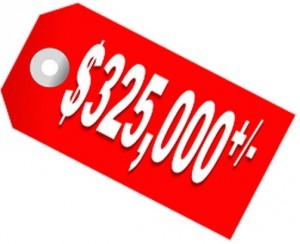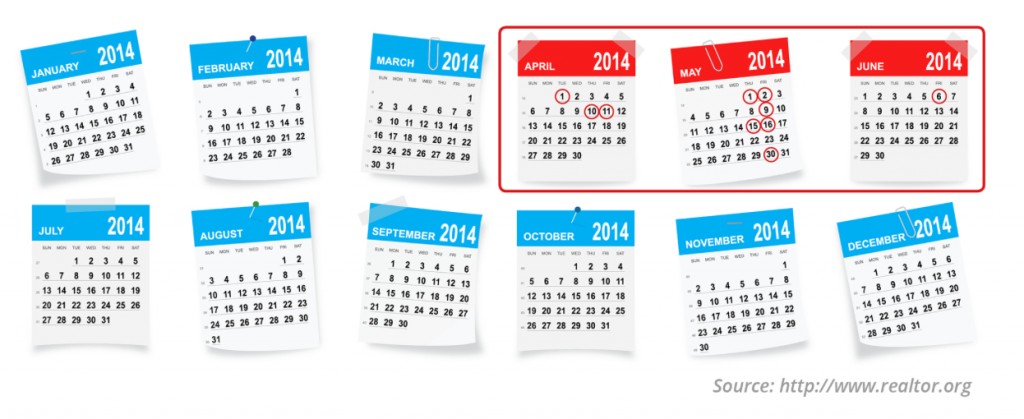Category Archives: sellers
Things to Consider When Selling Your House
Selling a Property with a Tenant
Trying to Sell Your Home With a Tenant in Place May Bring Back Visions of the movie “Pacific Heights”
 If you rented out your home to a tenant instead of selling the house you might be ready now to put it on the market. The effort to sell a home can be complicated by the presence of a renter.
If you rented out your home to a tenant instead of selling the house you might be ready now to put it on the market. The effort to sell a home can be complicated by the presence of a renter.
Many real estate agents recommend waiting until your lease expires and selling your home without a renter in residence, not all landlords can afford to have their home vacant during the transition.
There are some great tenants that are cooperative. But in general, having a tenant can have a negative impact on a home that’s on the market. Normally, the home drops in value because of the condition of the home and the lack of access for agents and prospective buyers.”
Many real estate agents are reluctant to show buyers a tenant-occupied home because they expect resistance to allowing visitors into the property and assume the condition will be less than optimal. Smart tenants can hold up a sale for as long as year if they don’t want to move.
Tenant cooperation
For those homeowners who do choose to sell with a tenant in residence, landlords need to try to get the tenant to cooperate.
It’s one thing if the tenant already wants to move, but a tenant who doesn’t want to move can be down right hostile.
It is a difficult situation when a tenant denies access to Realtors and prospective purchasers. Some renters deny access to protect privacy, to hide who really lives in the unit, or to kill deals.
Are You Really Losing Money Leaving The House Unrented During The Sale?
With a tenant in place you basically reduce the pool of potential buyers significantly. A reduction in potential buyers also reduces the potential for a higher sales price. The amount of rent you’ll receive while the house is on the market could be much less than the overall drop in the sales price. At the end of the day, you’ll either breakeven in rent-vs-price drop or lose money depending on the market, condition of the house and cooperation of the tenant.
In the end, if the tenant is on a month to month lease, you should consider giving the tenant notice to move so that you can sell your home for the most money in the shortest period of time.
Invisible, Odor-free and Potentially Hazardous
 Most people’s first introduction to Radon is during the inspections of a home. It can be as much a surprise to a seller as it is a buyer. Radon is an invisible and odor-free, cancer-causing radioactive gas.
Most people’s first introduction to Radon is during the inspections of a home. It can be as much a surprise to a seller as it is a buyer. Radon is an invisible and odor-free, cancer-causing radioactive gas.
Radon can get into a home through cracks in solid floors, construction joints, cracks in walls, gaps in suspended floors, gaps around service pipes, cavities inside walls and even the water supply.
It is estimated that one out of every fifteen homes in the United States has elevated radon levels. The EPA recommends that you test your home which is the only way to find out if you and your family are at risk. If the level found is 4 picocuries per liter or higher, the EPA suggests that you make repairs or install a radon reduction system. Even lower levels can have health risks.
The EPA’s interactive map is available to find state and county information but still recommends that all homes should test for radon. More information can be found from the EPA in A Citizen’s Guide to Radon.
Test kits are inexpensive and can be purchased at stores like Lowe’s or Home Depot if you choose to do it yourself. If levels indicate a high enough level, you can contact a qualified radon service professional for another test or to mitigate your home. You can get information on identifying these professionals at www.nrpp.info and www.nrsb.org.
What Your Home Is Worth _ The Automated Value
There are sites all over the web that offer to tell you what your home is worth. Simply plug in your address and email and you’ll get a value. It’s fast; it’s easy but is it accurate?
There are sites all over the web that offer to tell you what your home is worth. Simply plug in your address and email and you’ll get a value. It’s fast; it’s easy but is it accurate?
The value is determined by what is called an Automated Valuation Model (AVM) that analyzes public record data with computer decision logic. Square footage, age, number of bedrooms and location are easily definable objective data. The challenge is identifying, measuring and comparing the subjective data.
An AVM cannot identify how unique features might add or detract from the value, if the market is declining or why the comparable sales apply or don’t apply to the subject property. Is a home worth more because it is near shopping or less because it is across the street from a high-traffic commercially zoned property?
Experienced professionals are more likely to make proper adjustments for condition, market appeal and positive and negative influences.
Imagine that you’re going out for dinner and you consult HamburgerAVM.com to tell you how much a hamburger is worth. It might be accurate based on condiments, vegetables and weight but can it address things like taste, quality, cleanliness, service, convenience or atmosphere. You certainly couldn’t present the printout to the waiter to negotiate a lower price.
An AVM can be a tool that a homeowner, prospective buyer, mortgage officer, appraiser or real estate agent can use to get a quick idea of price but there are inherent limitations that can only be considered by personal examination balanced with experience in the market place.
Experience and understanding of the subject property and the marketplace are critical to having confidence that a value is accurate. Any person could go through the same steps to arrive at a value but an experienced, well-trained professional is far more likely to assess all of the variables more accurately.
Allow me to help you determine the value of your Triangle home. Contact me to prepare a complimentary home evaluation.
13,808 Houses Sold Yesterday! Did Yours?
There are some homeowners that have been waiting for months to get a price they hoped for when they originally listed their house for sale. The only thing they might want to consider is… If it hasn’t sold yet, maybe it’s not priced properly.
After all 13,808 houses sold yesterday, 13,808 will sell today and 13,808 will sell tomorrow.
13,808!
That is the average number of homes that sell each and every day in this country according to the National Association of Realtors’ (NAR) latest Existing Home Sales Report. NAR reported that sales are at an annual rate of 5.04 million. Divide that number by 365 (days in a year) and we can see that, on average, over 13,800 homes sell every day.
The report from NAR also revealed that there is currently only a 4.4 months supply of inventory available for sale, (6 months inventory is considered ‘historically normal’).
That means less competition for buyers who are out in the market now, but more houses will hit the market soon with spring right around the corner.
Bottom Line
We realize that you want to get the fair market value for your home. However, if it hasn’t sold in today’s active real estate market, perhaps you should reconsider your current asking price.
Setting a Pricing Strategy For Your Home
Price it Right to Get It Sold
“We can always go down, but we can’t go up.”
If you’re selling your home this statement has probably crossed your lips at least once. But when it comes to setting a pricing strategy for your home, is it a good idea to start high and work your way down? Probably not, as most experts would advise that the best way to increase your odds of a successful sale is to price your home at fair market value. But, as logical as this advice sounds, for many sellers it is still tempting to tack a few percentage points onto the price to “leave room to negotiate”.
You could be setting yourself up for failure if you don’t price it right from the start:
Appraisal problems
Even if you do find a buyer willing to pay an inflated price, 90% of buyers use some kind of financing to pay for their home purchase. If your home won’t appraise for the purchase price the sale will likely fail.
No showings
Today’s home buyers are well educated about the real estate market. They review information about your home online before they ever think about viewing the house in person. If your home is overpriced they won’t bother looking at it, let alone make you an offer.
Selling the competition
Overpricing helps your competition and other properties for sale in your neighborhood. How? You make their lower prices seem like bargains. Nothing is worse than watching your neighbors put up a sold sign.
Stimatized and Stagnation
The longer your home sits on the market, the more likely it is to become stigmatized or stale. Have you ever seen a property that seems to be perpetually for sale? Do you ever wonder – What’s wrong with that house?
Tougher negotiations
Buyers who do view your home may negotiate harder because the home has been on the market for a longer period of time and because it is overpriced compared to the competition.
Lost opportunities
You will lose a percentage of buyers who are outside of your price point. These are buyers who are looking in the price range that the home will eventually sell for but don’t see the home because the price is above their pre-set budget.
One popular myth is that a great marketing plan will overcome a pricing problem. Nope – spending a zillion dollars on advertising, internet ads, and television spots won’t motivate buyers to pay you more than the home is worth. Another myth is the assumption that a buyer will see your home, fall in love, and write you a check so the competition doesn’t matter. Wrong. Buyers don’t look at homes in isolation. Most look at 10-15 homes before making a buying decision. Because of this, setting a competitive price relative to the competition is an essential component to a successful marketing strategy.
Thinking Of Selling? Now May Be The Time
It is common knowledge that a large number of homes sell during the spring buying season. For that reason, many homeowners hold off putting their home on the market until then. The question is whether or not that will be a good strategy this year.
The other listings that do come out in the spring will represent increased competition to any seller. Do a greater number of homes actually come to the market in the spring compared to the rest of the year? The National Association of Realtors (NAR) recently revealed which months and days of the year most people list their home. Here is a graphic showing the results:
The circles represent the ten most popular listing dates in 2014. We can see that all ten days are in the second quarter of the year. The months in red represent which months most people put their home on the market. Again, the three months in the second quarter are most active for listings. Last year, the number of homes available for sale in January was 1,880,000.
That number spiked to 2,350,000 by July!
What does this mean to you?
With the job situation improving and mortgage interest rates projected to rise later in the year, buyers are not waiting until the spring. They are out looking for a home right now. If you are looking to sell this year, waiting until the spring to list your home means you are putting your house on the market at a time you will have the greatest competition for your buyer. It may make sense to beat that rush of housing inventory to the market and list your home today.







